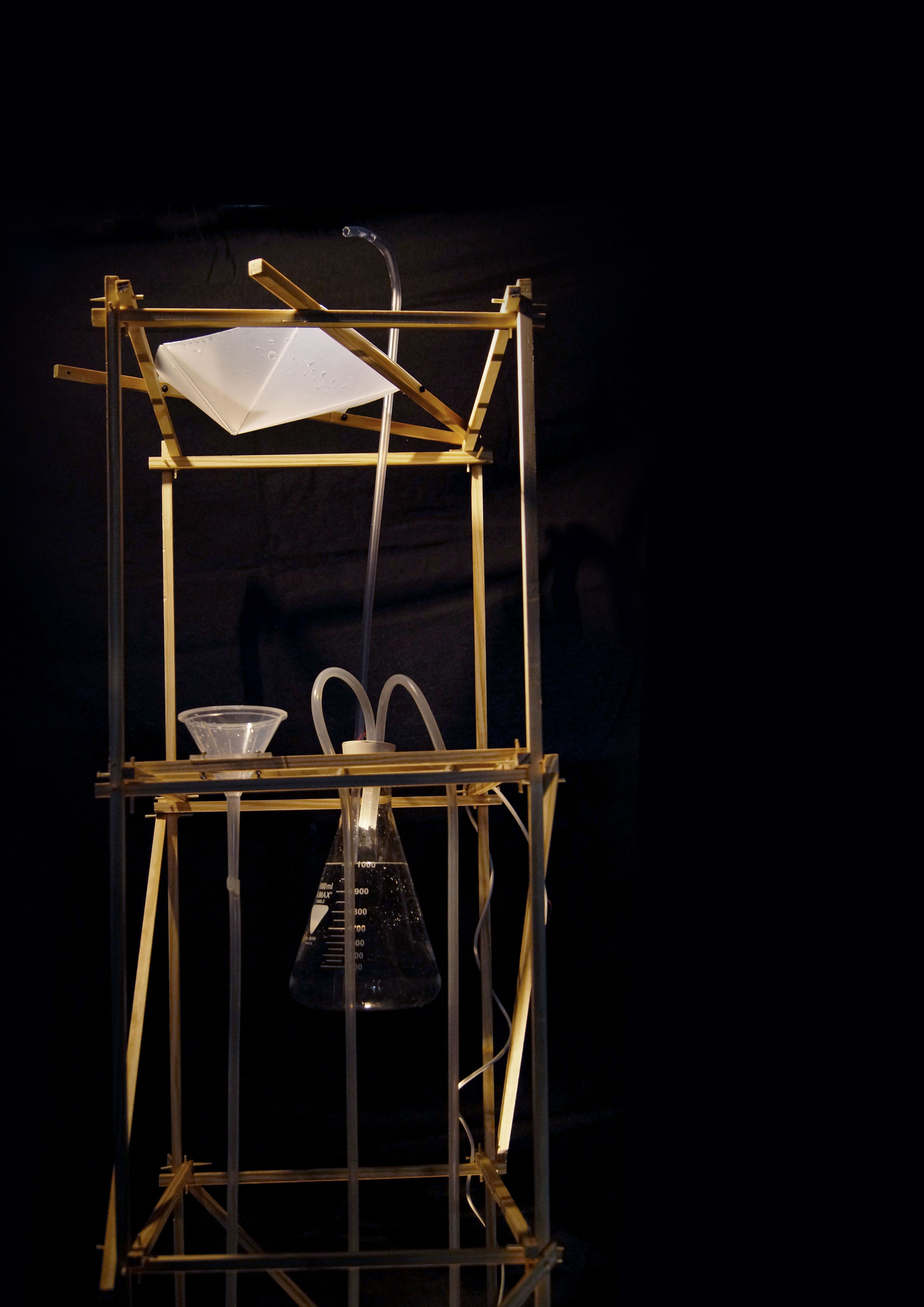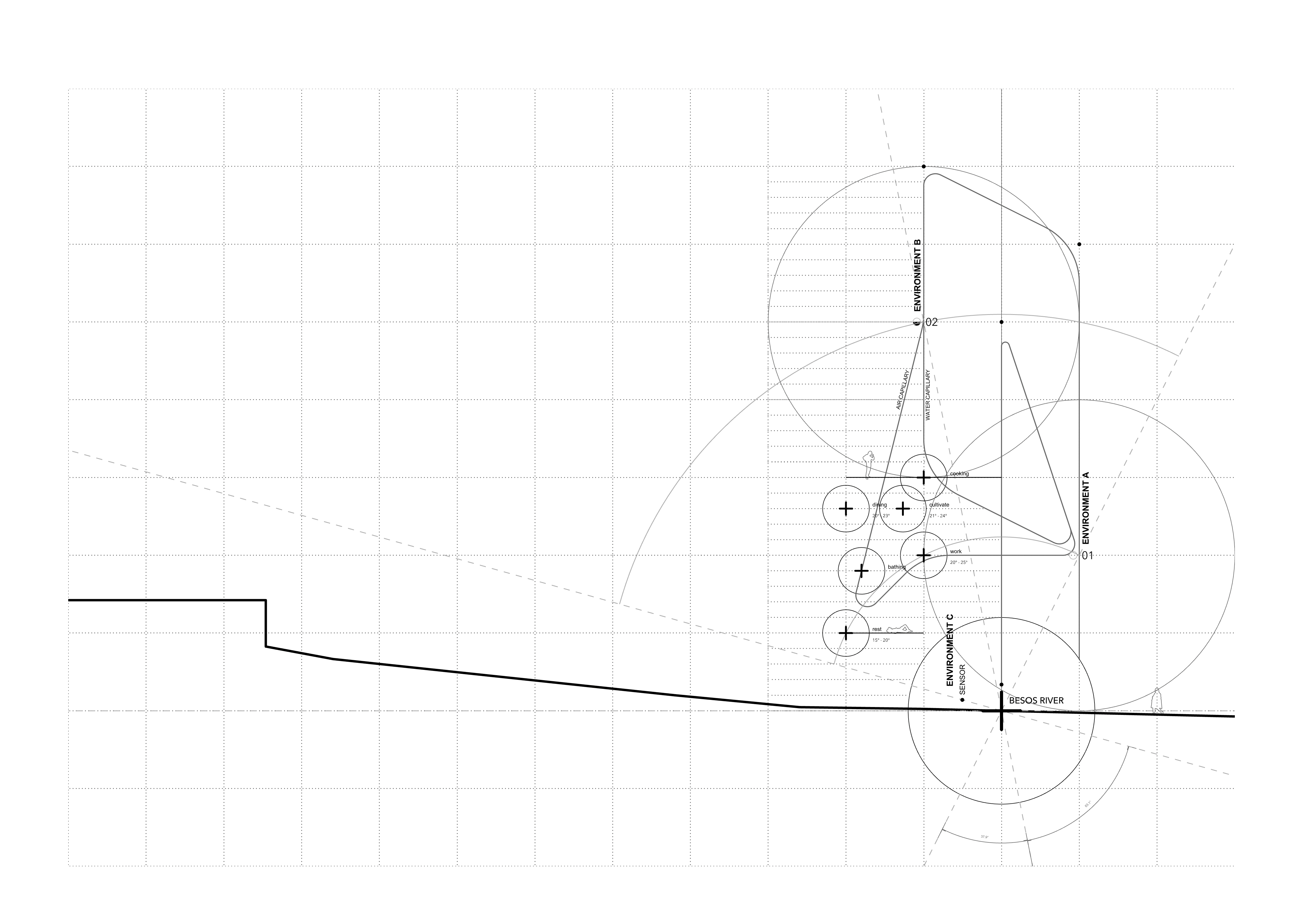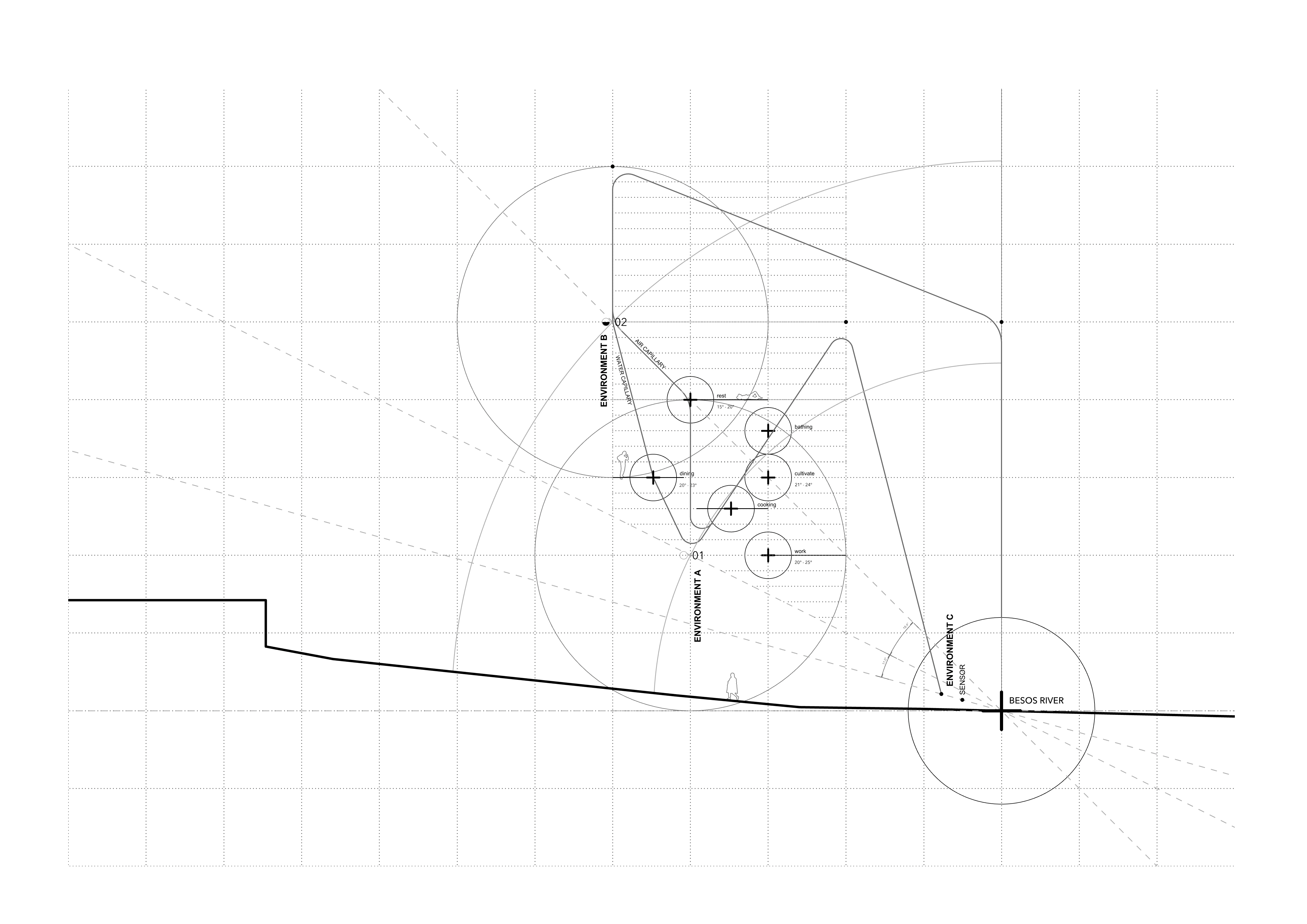
hydrologic habitation, IAAC | architecture, research



HYDROLOGIC HABITATION
Institute for Advanced Architecture of Catalonia (IAAC)Barcelona, Spain
This research addresses the question:
TO WHAT EXTENT CAN ARCHITECTURE ADAPT WITH NATURE AS AN ACTIVE, DYNAMIC SYSTEM AND ENCOURAGE NEW WAYS OF LIVING WITH THE ENVIRONMENT?
WATER AS MEDIUM
With water making up 70% of both planet earth and the human body, the research questions how the relationship between human, architecture and wa-ter can define the spaces and lifestyles we inhabit. Energy being intangible, is difficult to visualize but water holds the ability to carve, move, reflect, and re-spond and its power is a medium with which we to make this energy evident. The project explores the phenomenon of gravitational potential energy in order to circulate water and to shape a new way of living in response to the environment.
PHASE I - THE HYDRO-PNEUMATIC WATERFALL
For our proposal we adapted a Hy-dro-Pneumatic system such as Her-on’s Fountain to utilize gravitational potential energy within an open loop cycle with an input and output. The system operates continually based on changes in the river and, at the end of each cycle, returns the water back to the river. We aim to keep the water within the structure for as long as possible. The environmental con-ditions and way of living within the house is directly related to the chang-es in climate and to the changes in the river over the course of 24 hours and one year.
PHASE II- THE ONE3 HOUSE
Phase II was aimed at designing one house for one person, for one year. The site is located on the River Besòs in Barcelona, Spain.
Data concerning temperature and precipitation was collected as a reference for the design of the final house giving a basis for typology and location of spaces.






EVAPORATIVE COOLING AND HEATING
Water from river Besos is filtered and then pumped into the house using a passive pump. At two points within the cycle the water leaves the airtight containers and interacts with the climatic conditions where we take advantage of the external envi-ronment to create two facades, one for heating and one for cooling. The structure was designed to organize the spaces relative to these facades taking cues from the desired tem-perature, the movement of the sun, and use of water within the spaces.
We derived the pattern within the facade by testing quantity of water against time, using a biogenic solver to calculate the optimum form for holding the most amount of water.
GRAVITATIONAL POTENTIAL ENERGY
Gravitational potential energy is the energy stored as the result of its vertical position or height. Hence, the greater the height, the higher the energy. We explored the poten-tial of this phenomenon through a hydro pneumatic water system. With this system we are able to circulate water vertically through a structure to facilitate a new way a living that is symbiotic to nature and its passive energy source.
SENSING DEVICE
A sensing device was designed which could be left on site to capture en-vironmental data. This device was inserted into the river and the speed of the river was calculated based on the flow of water.
By inserting our device into different locations along the river, we were able to find the ideal location on site for the house. The house is located at the center of the river, which has the maximum depth, and highest flow of water.
Water from river Besos is filtered and then pumped into the house using a passive pump. At two points within the cycle the water leaves the airtight containers and interacts with the climatic conditions where we take advantage of the external envi-ronment to create two facades, one for heating and one for cooling. The structure was designed to organize the spaces relative to these facades taking cues from the desired tem-perature, the movement of the sun, and use of water within the spaces.
We derived the pattern within the facade by testing quantity of water against time, using a biogenic solver to calculate the optimum form for holding the most amount of water.
GRAVITATIONAL POTENTIAL ENERGY
Gravitational potential energy is the energy stored as the result of its vertical position or height. Hence, the greater the height, the higher the energy. We explored the poten-tial of this phenomenon through a hydro pneumatic water system. With this system we are able to circulate water vertically through a structure to facilitate a new way a living that is symbiotic to nature and its passive energy source.
SENSING DEVICE
A sensing device was designed which could be left on site to capture en-vironmental data. This device was inserted into the river and the speed of the river was calculated based on the flow of water.
By inserting our device into different locations along the river, we were able to find the ideal location on site for the house. The house is located at the center of the river, which has the maximum depth, and highest flow of water.